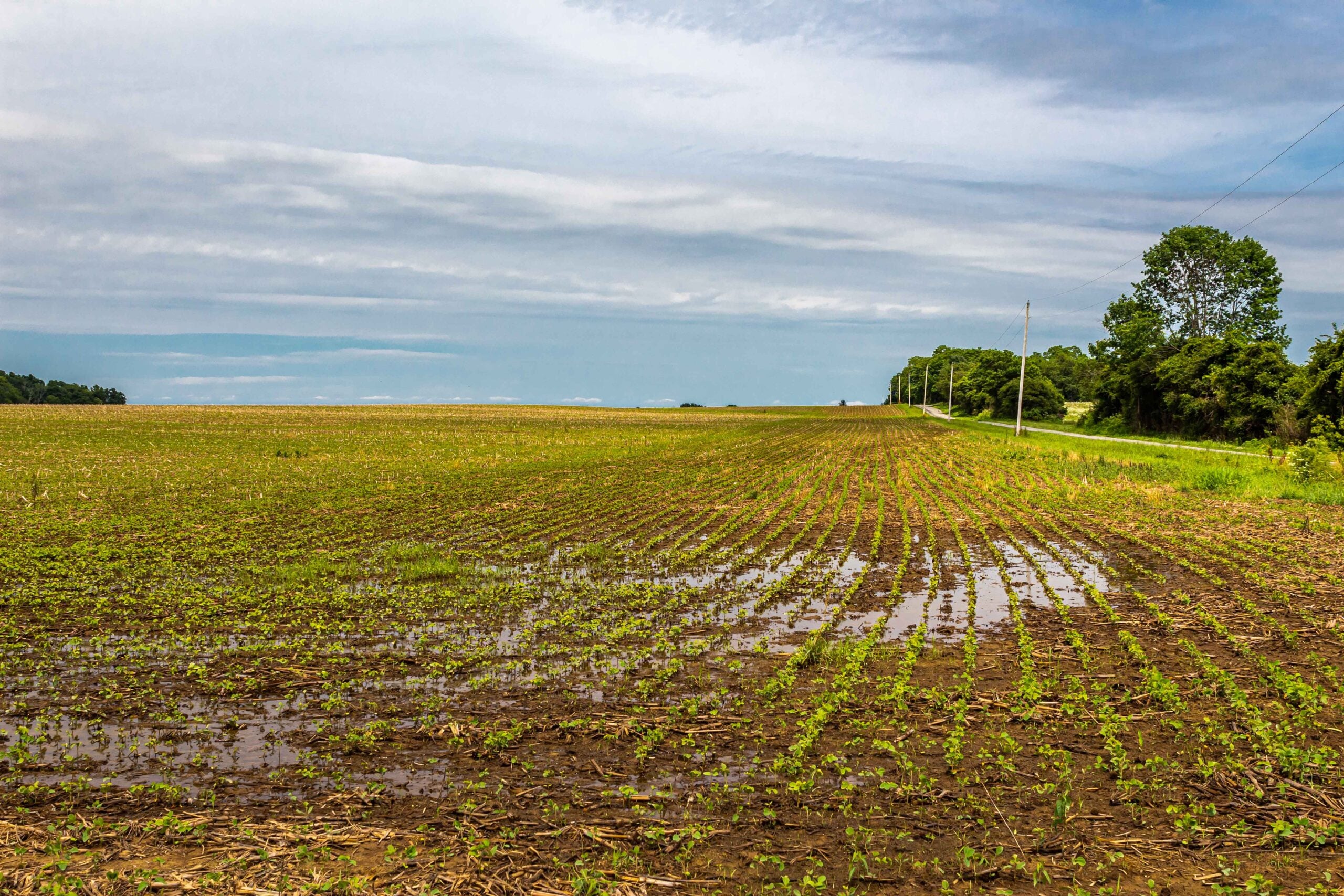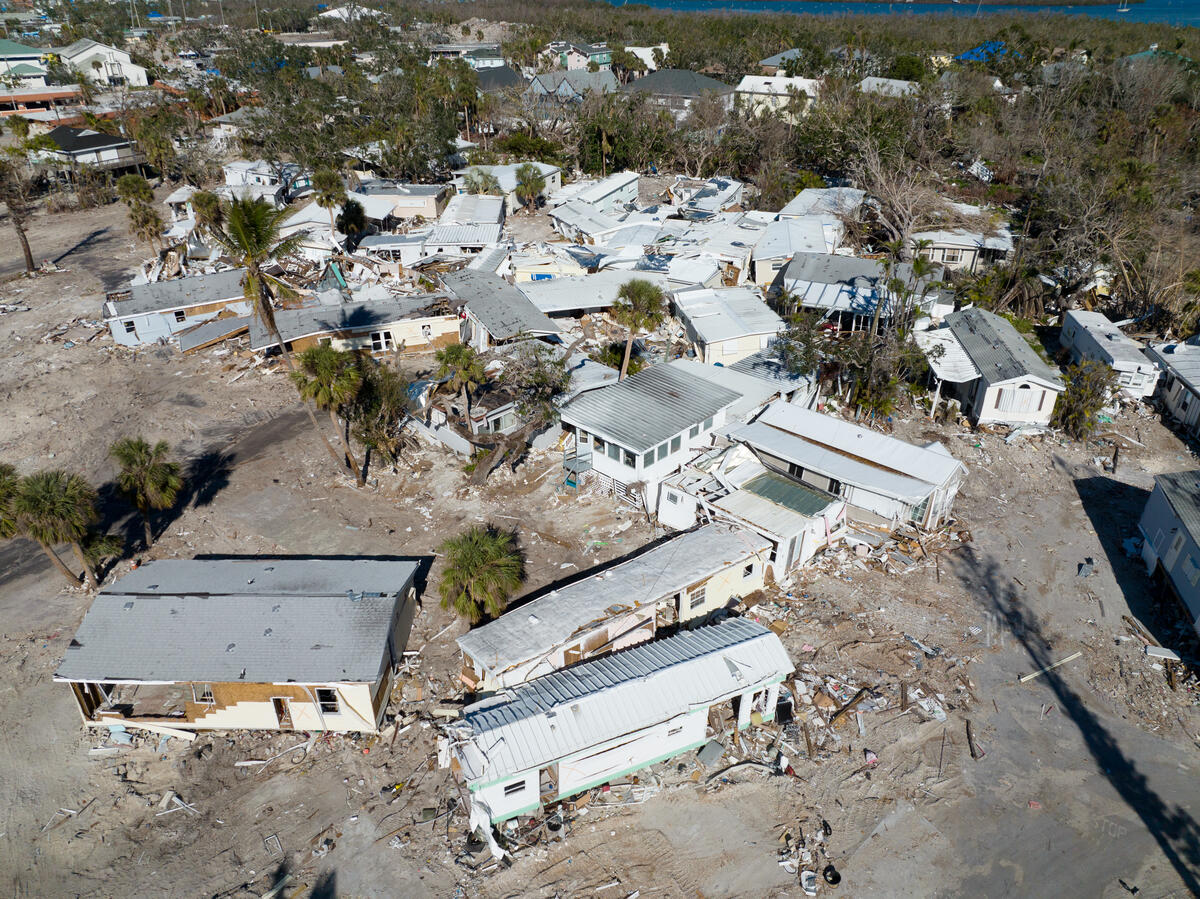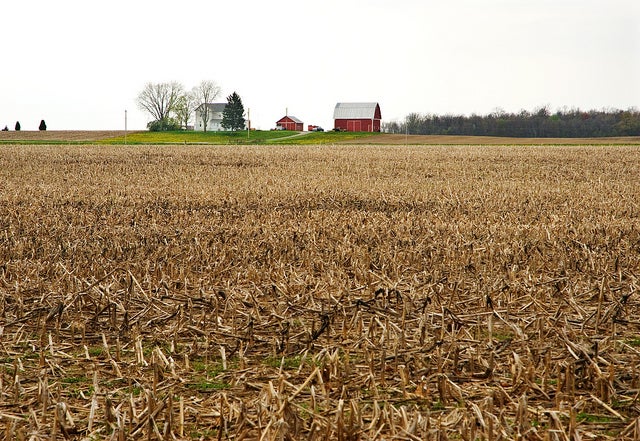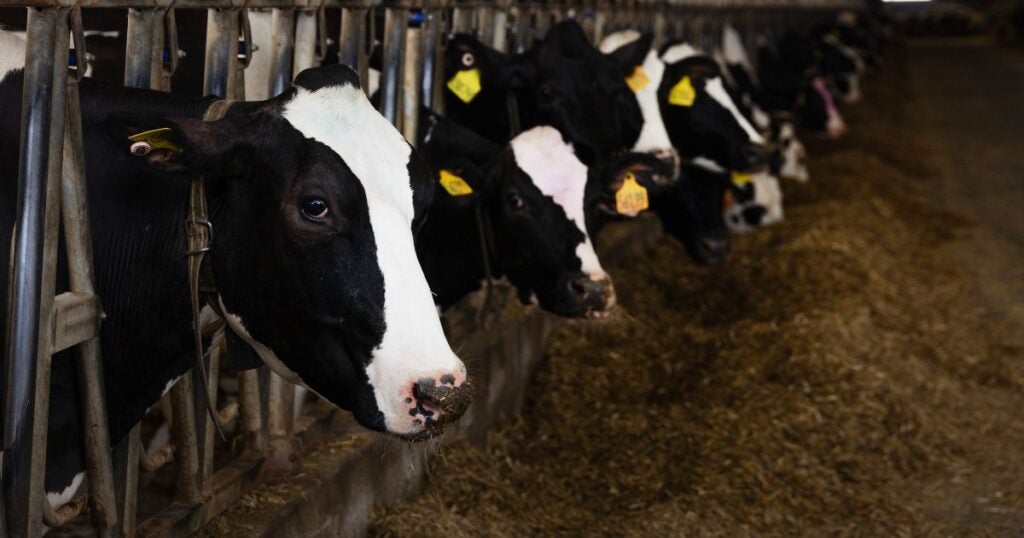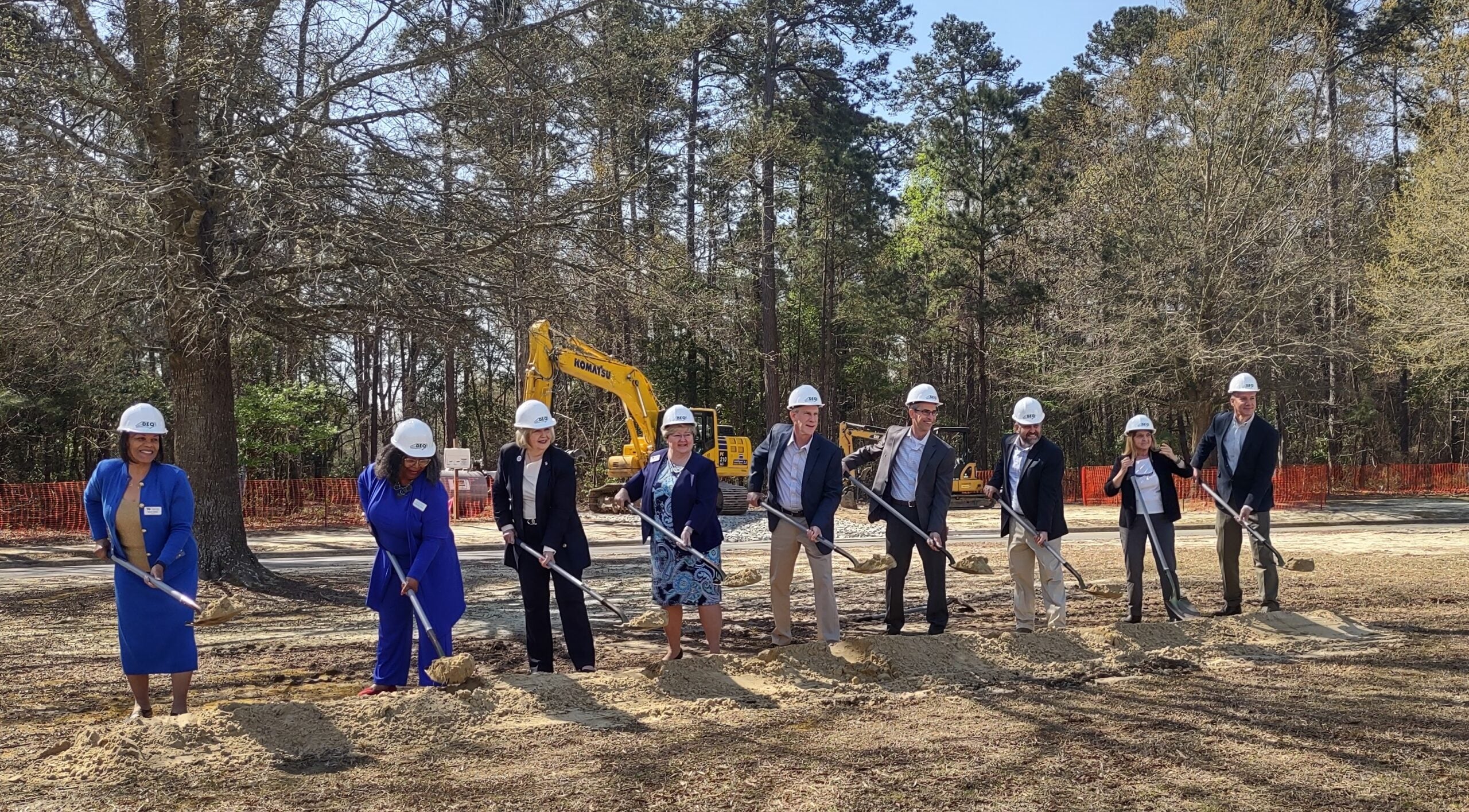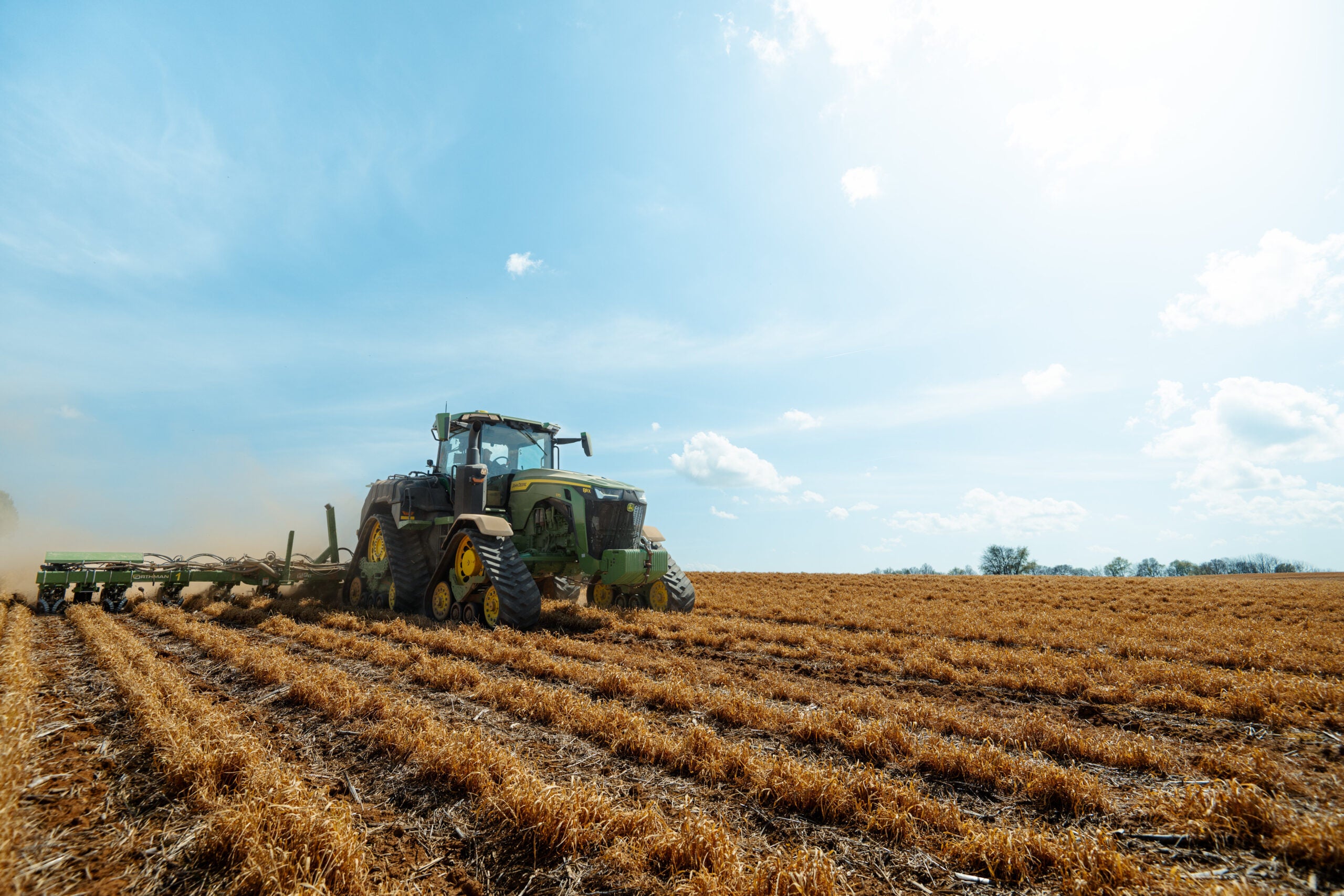Last year, the U.S. faced its fourth most costly year of extreme weather, contributing to more than $20 billion in agricultural losses. As this trend of increasingly extreme weather continues, modernizing agricultural insurance in the U.S. is a crucial step toward protecting farmers’ financial stability and reducing the risks they face when transitioning to climate-resilient practices.
Growing Returns
Modernizing agricultural insurance to strengthen farmers’ ability to adapt
Climate Change Demands a Global Paradigm Shift in our Relationship with Wildfires
A few weeks ago, the Canadian province of Manitoba declared a state of emergency as a result of wildfires, with Manitoba Premier noting “this is the largest evacuation Manitoba will have seen in most peoples’ living memory”. This marked an ominous start to the country’s wildfire season, with about 225 wildfires burning, half of them out of control, by mid-June and some already turning deadly. Canada is not alone in facing a crisis. Wildfires are intensifying in fire-prone areas, and emerging in regions that have never previously grappled with high fire risk. In January, outside the typical fire season, Los Angeles was on fire for weeks. In 2024 alone, countries including Brazil, Bolivia, Peru, the Republic of Congo, Greece, Portugal and Canada battled devastating blazes.
A new normal for Irish dairy: Pioneering sustainable change for Ireland’s climate future
Ireland’s lush pastures and deep-rooted agricultural traditions have long made it a global dairy powerhouse. But with agriculture contributing nearly 38% of the country’s greenhouse gas emissions — four times the EU average — there’s no escaping the uncomfortable truth: Ireland’s booming dairy sector must evolve to meet the country’s climate targets.
To respond to this pressing challenge, Environmental Defense Fund Europe (EDF Europe) and EIT Climate-KIC partnered to explore a new vision for sustainable dairy. The goal? To co-create a future-proof model that balances climate action with economic resilience in Ireland’s rural heartlands.
Below, we’ll outline a new roadmap for sustainable dairy. Read More
Major federal funding cuts leave communities less prepared for hurricane seasons
On April 4, the Federal Emergency Management Agency (FEMA) was directed under the Trump administration to eliminate one of the largest disaster preparedness programs in the country. By defunding the Building Resilient Infrastructure and Communities (BRIC) program, the administration will be canceling more than $882 million in funding aimed at helping communities reduce their risks and minimize costs ahead of natural disasters. These programs help keep people safe and save taxpayer dollars when future storms hit. As we enter this year’s hurricane season, BRIC funding cuts, along with other actions targeted at dismantling disaster safety nets, leave vulnerable states and communities less prepared than ever.
Learn how to navigate federal flood planning with the U.S. Army Corps of Engineers
Flooding is the costliest disaster in the United States, touching communities from coastlines to cities to inland towns, and wreaking havoc across countless homes, businesses and ecosystems. Estimated to cost the nation up to almost $500 billion per year, more frequent and severe flooding events are causing communities to find solutions that tackle the potential impacts.
Many local communities and entities seek opportunities to collaborate with the U.S. Army Corps of Engineers (Corps), who conduct federally funded flood risk management studies. These studies can be a great way to understand flood risks in a community and to build large-scale resilience.
However, through a series of surveys and EDF experiences, many advocacy partners that have participated in these studies expressed the Corps planning process is confusing and complex! To address this concern, EDF is releasing a new step-by-step guide to help communities and fellow advocates navigate federal flood planning and learn when and how to engage.
Explore our step-by-step guide now
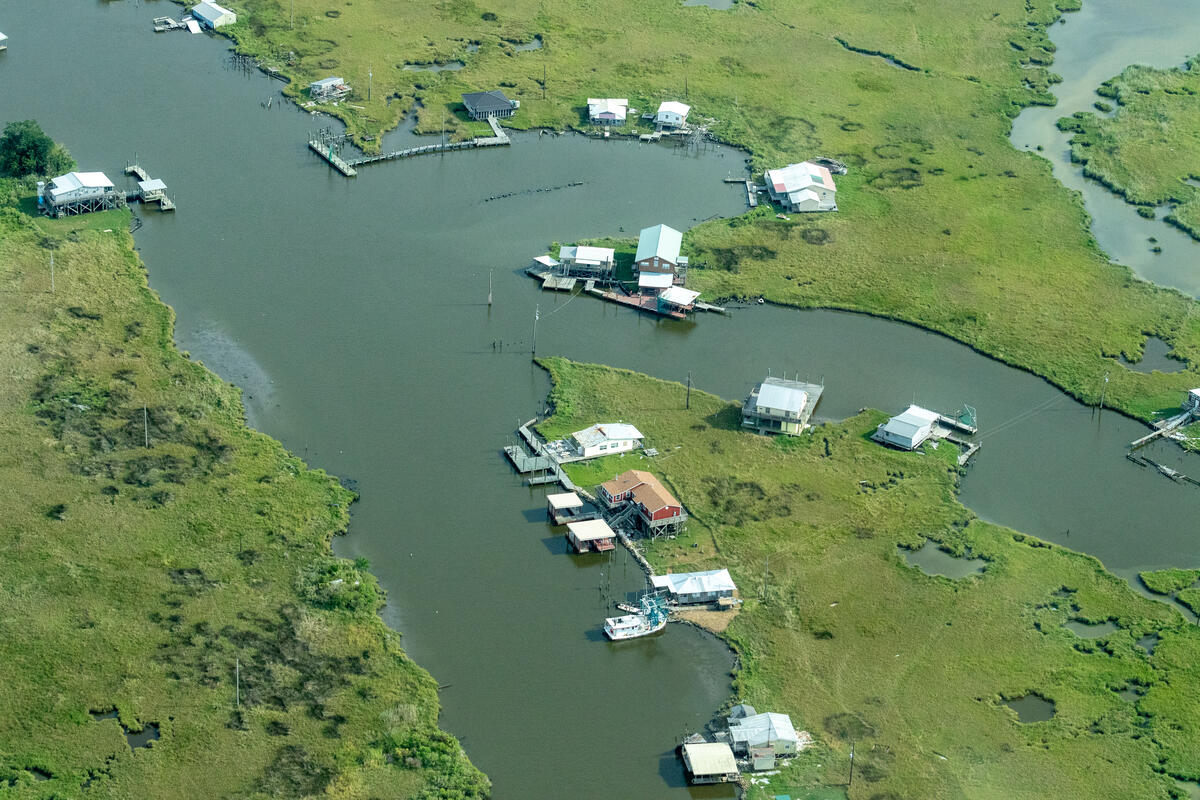
Delta flyover – Mid-Barataria Sediment Diversion wetlands restoration project in the MS River Delta region of Louisiana
What is federal flood planning and how can it help your community?
Before we get into the ins and outs of the step-by-step guide, let’s bring it back to the beginning. What is a federal flood feasibility study anyways?
In simple terms, a federal flood study emerges when a local community or entity, later known as the study’s non-federal sponsor, raises flooding concerns to the Corps and expresses the need for a feasibility study that can identify solutions to this problem. The proposal must be authorized by Congress and receive funding through appropriations, and if that happens, the Corps will move forward with conducting a feasibility study that may eventually lead to the construction of a project(s). Potential projects could include anything from developing floodplain management plans to installing grey and green infrastructure to forming disaster response strategies.
Why should you seek a federal flood study? No matter the size, budget or location, the Corps provides an opportunity to address flood risks in a community. Federal flood studies and their projects are designed to help leaders and communities prepare for extreme weather and disasters, which are increasing in frequency and severity. Experts agree it is financially smart to prepare before disaster strikes, with research showing that every dollar spent on mitigation can save $13 in damages. It also provides a safety net for residents to better protect their homes, businesses and families.
Using our step-by-step guide to navigate federal flood planning
EDF’s new step-by-step guide is a much-requested resource that gives advocates an overview of the complex federal flood planning process led by the Corps. This guide walks you through each step of the planning phase, allowing users to better understand and anticipate how a study and project develops.
We also share ways advocates can engage during the planning process to ensure the study’s outcome best represents their community’s priorities and goals. The guide incorporates helpful resources, like a glossary, FAQ guide and templates along the way.
Looking at case studies
EDF is proud to have worked alongside several local communities on a variety of federal flood studies and projects, represented in the following case studies:
Collier County, Florida
In Collier County, Florida, EDF and local partners engaged in the planning process to propose the prioritization of nature-based solutions as well as hybridized, multi-hazard flooding and community engagement. We presented alternative study renderings with these priorities in mind, gaining media attention and eventually leading to changes in the proposed study.
New York-New Jersey Harbour and Tributaries
In the New York metropolitan area, EDF worked with a coalition of local partners to advocate for changes, like incorporating multi-hazard flooding solutions, to the Corps’ $52 billion plan to address flooding in the New York-New Jersey Harbor. The coalition launched a campaign website, gained media attention and ran advertisements, which led the non-federal sponsor to make a request for the Corps to take specific actions that better align with stakeholder priorities.
Mid-Barataria Sediment Diversion, Louisiana
EDF and partners at the Mississippi River Delta Coalition have guided the Mid-Barataria Sediment Diversion project and played a key role in advocating for a $2.9 billion initiative to reconnect the Mississippi River to the Barataria Basin. Learn more about the benefits of this project.
Explore our step-by-step guide now
Farmers need technical support to balance crop yields with climate benefits
Cropland, which covers roughly 13% of global land surface, is integral to producing food, slowing warming and boosting resilience. Farmers find themselves in a difficult spot: they are compelled to deliver higher yields to feed a growing human population but with a lower carbon footprint.
This complexity is underscored in a recent paper published in Nature Climate Change, which assessed how tillage, cover crops and crop residue affected both crop yields and greenhouse gas mitigation over time. This work is the first to examine the yield and mitigation impacts of common regenerative agriculture practices independently and collectively at a global scale looking out to 2050 and 2100.
Importantly, farmers can use these conservation practices to produce yields and mitigation, but they will need additional technical and financial assistance to do so. This is critical to maintaining livelihoods, food stability and supporting the climate.
To slow climate change, we must measure livestock methane accurately
Reducing methane emissions, a climate super-pollutant, can lessen rates of warming within decades. Since livestock farming is one of the biggest emitters of that methane gas, with enteric methane from cow burps alone contributing about a third of all human-caused methane emissions each year, lowering it can have a big impact.
To reduce livestock emissions, we first have to know where we’re starting. That requires accurate and validated measurement, but measuring methane from livestock isn’t simple — how we do it matters. These are the most important considerations.
Celebrating the groundbreaking of a natural infrastructure project to combat flooding in North Carolina
Environmental Defense Fund (EDF) joined North Carolina’s Department of Environmental Quality (DEQ) at a groundbreaking event today to celebrate the progress of a new and significant natural infrastructure pilot project.
The Stoney Creek pilot project is an innovative approach to utilizing natural infrastructure and nature’s processes to address flood risk in the City of Goldsboro and in the greater area of Wayne County, North Carolina. Moreover, it is a major step forward in advancing community flood resilience across the entire state.
Farmers need support to survive this economic squeeze
In conversations with farmers in recent months, one word keeps coming up to describe their economic reality: “squeeze.” High farm input costs and loan interest rates are making it more expensive for farmers to grow crops. At the same time, low commodity prices mean they earn less money for the crops they grow. Farmers are caught in the middle of a bad deal with many asking whether it is even worth it to farm this year.
Farmers are facing this dilemma while also navigating additional disruptions and uncertainty. Federal funds have been frozen or canceled, putting farmers with existing contracts at risk after they’ve already invested their own money with the expectation that government funding would cover the remaining cost of farm improvements. Tariffs create another layer of price uncertainty and open the door for other countries to gain a competitive advantage in global markets. On top of this, farmers in several regions have experienced damage from extreme weather events, making their financial situation even more fraught.
Farmers are getting squeezed, and this makes it harder or even impossible for them to position their businesses for long-term success. But it doesn’t have to be this way.
Three ways to improve soil carbon measurement
Measuring soil carbon accurately is essential for ensuring confidence in large-scale efforts to improve soil health, reduce greenhouse gas emissions and support initiatives like carbon credit programs.
But determining how much organic carbon is stored in soil from decomposed plants can be a challenge, leading to a well-known problem: different soil testing labs can give different numbers for the same soil.










